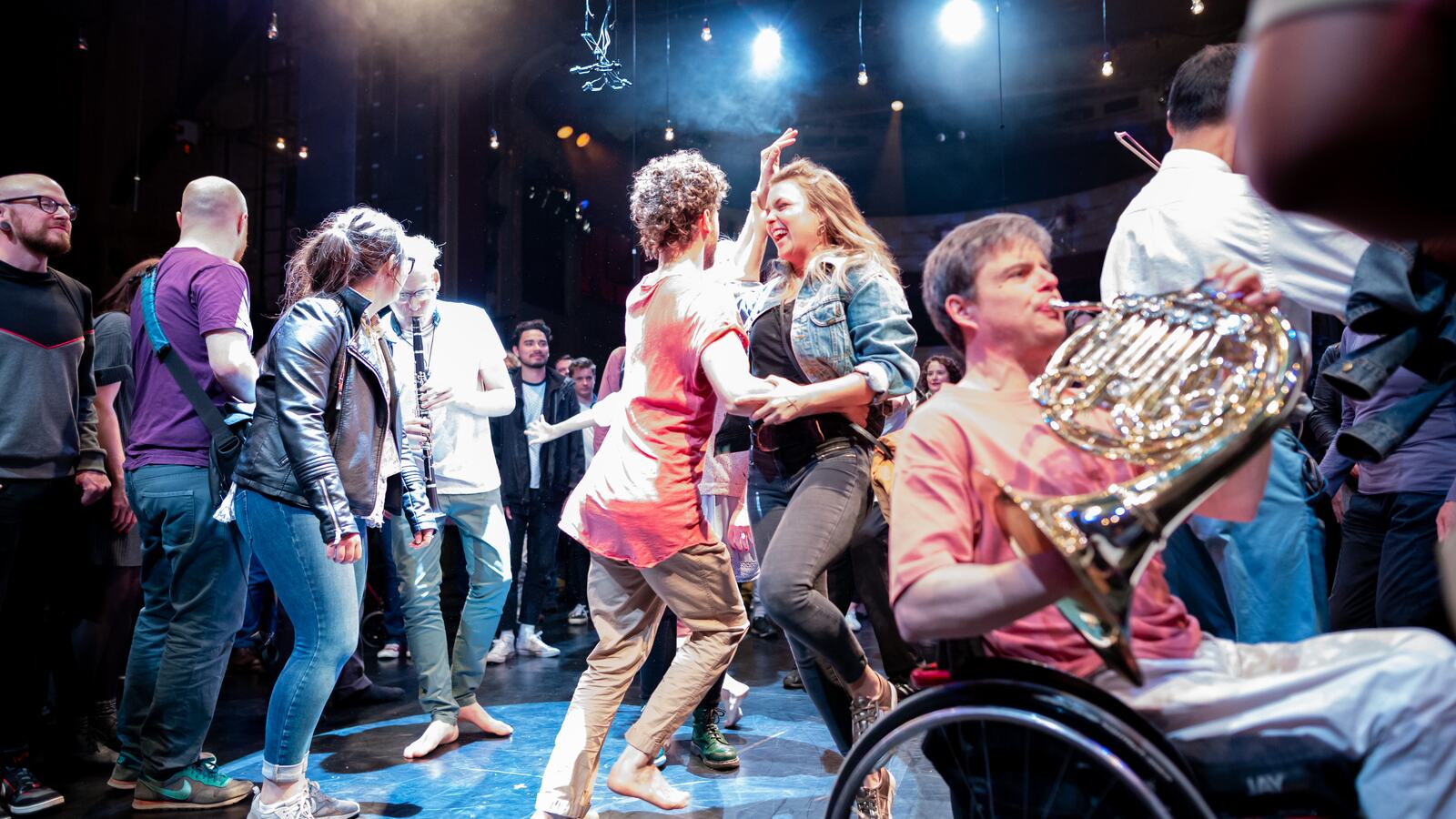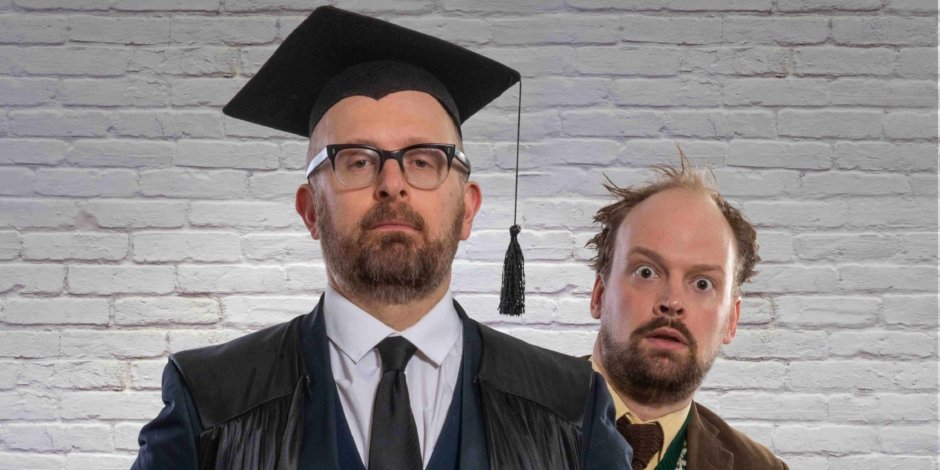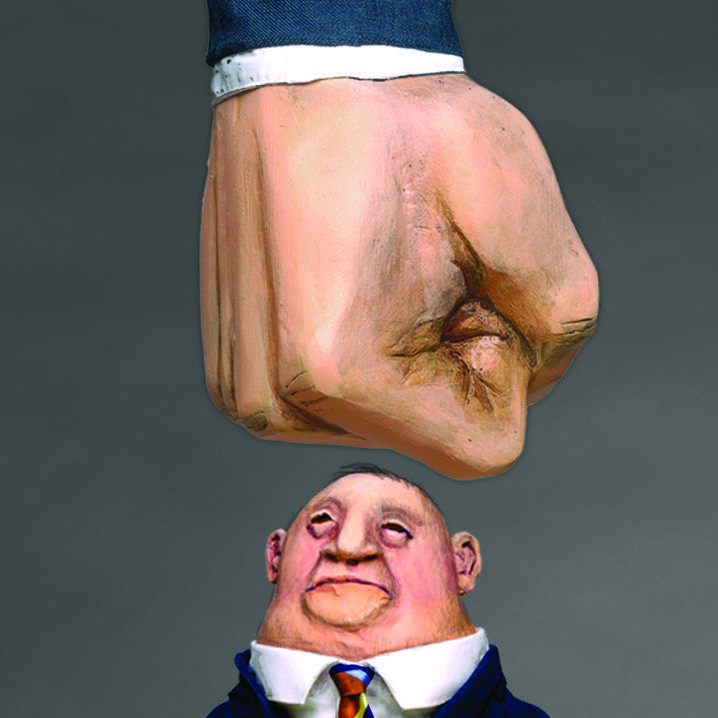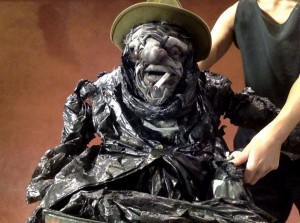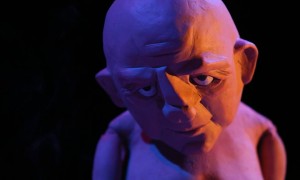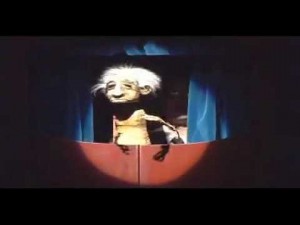This was a very interesting experience for me; not just the show itself, but also the subsequent conversations I had with arts industry friends who also saw it, which revealed very mixed responses. This is perhaps not surprising given it is a taboo-stretching satire on ‘inclusivity and the arts’: My Left Right Foot: The Musical may be one of the most controversial performances to appear at the Theatre Royal Brighton for some time.
The show tells the story of how a Scottish amateur dramatics group attempt to win a national prize by creating an ‘inclusive’ show after discovering this garners more points in the competition. Their previous choices have seemingly been dominated by Pinter plays and they first consider making The Deaf and Dumb Waiter before settling on a musical adaptation of My Left Foot. Significantly, their version is to be based on the film adaptation starring Daniel Day Lewis rather than the autobiographical novel by Christy Brown.
Set in a naturalistic community hall, it uses surtitles to transmit the script to the Deaf community, and these projections at times expand into witty animations that take up the whole top-section of the set. One performer also translates the speech into sign language, functioning both as a character in the show and an actual signer for the audience. The onstage pianist, whose musical accompaniment is often augmented by a pre-recorded track (I presume), also provides occasional verbal descriptions of the set and action as a half-humorous guide for the visually impaired.
Most of the characters are portrayed as somewhat crass and motivated by barely concealed ambition. Lead performer, Gavin, (with West End experience) excitedly anticipates the plaudits, pointing out how many Oscars have been won for playing ‘disableds’. Lying back in a wheelbarrow he practices his impression of Daniel Day Lewis’ impression of the severely disabled Christy, to audible gasps of shocked amusement from the audience. The movement specialist in the group leads a session designed to help the actors ‘find their inner cripple’ which involves them flapping around on the floor and groaning. It’s fine, it’s a satire, right?
The backstage guy, Chris, has an actual disability (both the character and the actor) as evidenced by his ‘wonky legs’, as one character describes it. Chris is enthusiastically invited to participate but incorrectly assumes this will be to play the part of Christy. In fact they just want him to advise them on the reality of being disabled. Chris has strong feelings about mainstream representations of disability, such as the Day-Lewis movie, which he describes as ‘inspiration porn’ designed to make the able-bodied majority feel better about themselves without addressing the real-life problems of the disabled. He points out that Christy married his nurse, a former prostitute, who continued numerous, hurtful affairs during their marriage: a disheartening truth that is left out of the film; as is his alcoholism and sad end.
Chris fancies the director, which leads to a tortured love triangle involving these two and the movement director who fancies Chris and is jealous of her rival. In an act of spite she calls the Scottish Amateur Dramatics Association to inform them that an able-bodied actor will be playing a disabled character. After consulting the Diversity and Inclusion manager, the administrator on the other end of the phone confirms this is a breach of regulations. Later a letter arrives stating that their production is ineligible for the competition, and Chris is given the role.
During the interval I overheard a woman saying ‘I thought it was going to be really PC, but it’s not, it’s really funny’, which perhaps is revealing of the PC image problem – it is often seen as judgemental and prohibitive rather than inspirational. Early on in the second half we discover that the cast thinks Grant was actually much better in the disabled role than the actually disabled Chris. I enjoyed and appreciated this problematising development, and the show’s readiness to explore the many grey areas rather than ploughing the expected, safe furrow. To me, it felt like a timely contribution to the current cultural tussling over the madness or necessity of political correctness and a surprisingly daring parody, very ‘close to the knuckle’, as one friend described it. But whilst it may be daring, is it deft? Opinions clearly varied.
I won’t spoil the later plot developments, but will say they effectively kept me wrong-footed and engaged until the finale. Interspersed within the narrative are recreations of the show they create based on the film, often delivered in rousing musical numbers such as ‘Genius Boy’, which I found quite mind-blowingly complex. Other notable mentions include Chris’s rendition of ‘Spastic Finger’ in which he celebrates the involuntary vibrational tendencies of his hand that prove particularly effective at stimulating female genitalia. Another is Grant’s song about becoming ‘Woke’ after reading up on disability issues, which turns out to be a self-serving, virtue-signalling delusion.
At some point I felt that I actually realised what the point of musical theatre might be: the songs serve to emphasise and thereby better transmit the internal emotional states of the characters. I suppose that may be really obvious to many, but wrapped up inside this deceptively complex nebula of approaches to the issues, it clicked. And the irony is that one key question the piece asks is how much a dramatisation ought to divert from the messy details of reality.
Does the introspective Ian’s social awkwardness count as a disability? Is Chris actually ‘disabled enough’ to represent the far more severely disabled Christy? Does Grant’s later diagnosis of mild ADHA make him eligible to play the part? I found this provocative complexity of questions interesting. What it did do for me was effectively satirise the myriad layers and types of discourse around disability. But then, I’m an able-bodied, white, heterosexual, well-educated, relatively middle-class and apparently quite-nice-looking man – so what do I know about prejudice? At several points I did wonder who might take offence at this show, and for which reasons.
A provincial Am-Dram company may seem like an easy and clichéd target for satire, especially when perpetrated by the National Theatre of Scotland. My mother’s participation in our small-town amateur dramatics company (who did their fair share of Pinter plays) set me off on the road to appreciating the performing arts, so I suppose I might have reason to rankle. The fact that there is ‘only one’ disabled performer in the piece may suggest tokenism, and as a friend pointed out, it may have been far more radically effective to have an all-disabled cast representing able-bodied characters. But is this a condescending attitude to take towards the actual disabled actor playing Chris, who might reject the idea that he has allowed himself to be used in this way?
The key question would seem to be whether the Net influence on those who see it is positive or negative regarding their attitudes towards disabled people. Is this just another example of ‘inspiration porn’ hoping to have its cake and eat it? Or is it astute and deceptively nuanced romp through the issues explored? Who knows and who’s to say? It is undeniable that the majority of the (presumably non-arts industry professional) audience in attendance certainly made vocal their appreciation at the end, and I should admit I that found it a surprisingly enjoyable and thought-provoking experience.




